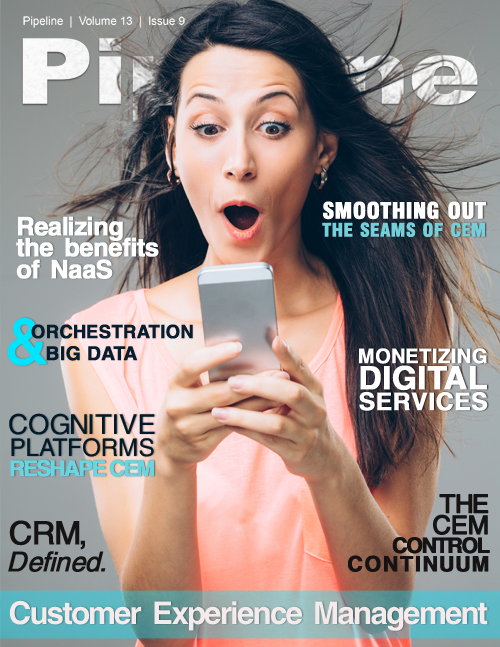How Cognitive Platforms are Reshaping the CEM Landscape
According to the The Connected World Technology Report by Cisco, for customers in the 21-29 year old age group, internet access is more important than owning transportation. Thirty two percent said the internet is as important as water, food, air, and shelter. Forty percent consider internet access more important than dating and social activities, and 50% said they could not live without internet access. The report also highlights something interesting in exchange for a free smartphone with unlimited data service, more than 4 in 10 professionals would allow their carrier/service provider access to all of the data and information stored on the phone.
Given this information, go back to the customer calling about their internet service disruption. Just a few relevant data points about the individual customer’s demographic and a response tailored to empathize with the customer will help a customer service representative handle the call effectively with an irate customer that has just lost something they cannot live without. Providing that context about the customer, about the systems, about the weather, about global events, behavioral analysis studies, past interactions with similar demographics and connecting them all together to assess the problem and provide the shortest path to resolution is what cognitive systems are getting better at every day.
As we make the case for artificial intelligence to be at the forefront of customer engagement assisting the front line staff in most cases and automating the rest, we should also ensure that these systems are trustworthy. If humans do not trust cognitive systems, they will stop using them. One of the key concepts in helping systems gain trust is to have them explain the rationale behind the decisions being made. The WHY. Systems that are able to provide the reasons behind why and how a certain decision was arrived at will earn the trust of the user much more quickly than the ones that do not.
Enterprises have made significant investments in artificial intelligence systems over the past few years and are now demanding ROI. What were once in the experimental domain of the R&D labs is now seeing widespread proliferation in the enterprise. Some of the benefits of these applications may not be tangible, but they play to the underlying human emotions of trust and empathy that have a direct correlation to customer satisfaction. Enterprises should place emphasis on the value of customer satisfaction and continue to enhance the capabilities of the cognitive systems to provide better experiences.
What’s next?
Gartner predicts, “By 2020, 100 million consumers will shop in augmented reality” and that “half of all searches will be done by voice.” This is a call to action for companies to start investing in these areas to provide that immersive digital experience to their customers whether they are buying furniture, ordering a movie, paying their bill, checking the status of their order or trying to self-install the equipment from their cable provider. Augmented reality has applications in the entire LBGUPS (Learn, Buy, Get, Use, Pay, Service) chain of the customer journey and is something enterprises should start focusing their attention to. As augmented reality (AR) technologies start to mature, enterprises should be ready to capture the momentum and start rolling out solutions. AR, along with natural language voice interfaces, will be a huge game changer in customer experience management and will decide what companies go on to lead their industry domains.
We are transitioning from the era of eCommerce to VoiceCommerce and VisualCommerce. This transition promises an engaging customer experience that will generate significant value to companies by retaining customers and increasing the likelihood of a customer purchasing the product. People tend to remember 80% of things they see versus 20% of the things they read. Shoppers are twice as likely to order a product over voice as logging on to their computer or opening a smartphone app to purchase a product.
We are going through an era of transformation on various technology fronts, and companies should be ready to adapt and respond to these changes in an agile fashion. Disruption is the name of the game and companies that continuously improve their quality of engagement and experience with their customers will likely cede leadership to new entrants that embrace the latest and greatest in cognitive technologies. Steve Jobs once said, “Get closer than ever to your customers. So close that you tell them what they need well before they realize it themselves,” and we are witnessing a period where artificial intelligence and cognitive systems are enabling companies to realize that vision.



















